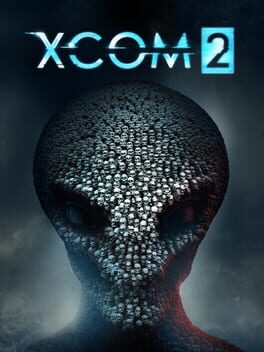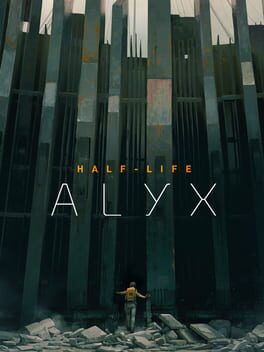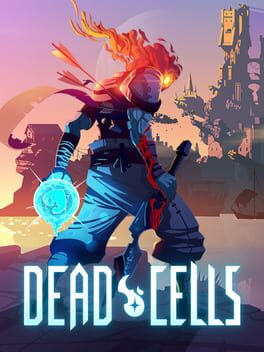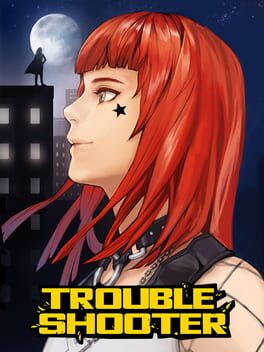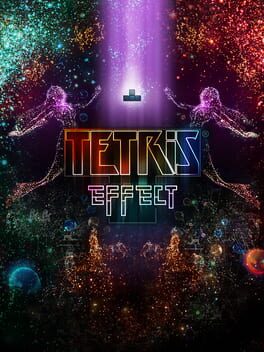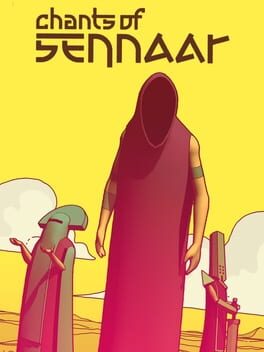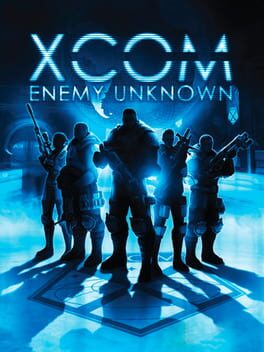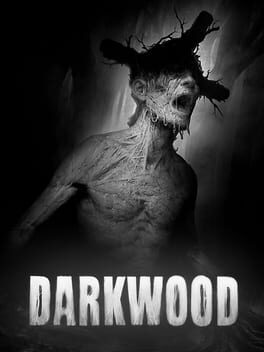PistolPumpkin
Bio
Nothing here!
Badges

Best Friends
Become mutual friends with at least 3 others

Noticed
Gained 3+ followers

Liked
Gained 10+ total review likes

Roadtrip
Voted for at least 3 features on the roadmap
Favorite Games
086
Total Games Played
012
Played in 2024
048
Games Backloggd
Recently Played See More
Recently Reviewed See More
Years ago, I was introduced to the genre of turn-based tactics games with XCOM: Enemy Unknown, and for better or worse I was left chasing that incredible high ever since. The only other game that could provide that perfect mixture of strategy, risk management, and the iconic kick of RNG was none other than XCOM 2. While the sequel largely supplanted this one in terms of pure gameplay, every once in a while I still get the hankering to start a campaign in this atmospheric sci-fi horror setting to beat down aliens with my stompy mech soldiers.
But why was I so instantly captivated by this game? This wasn’t something I could easily answer at first while getting thoroughly obliterated as a newbie commander. That first campaign was confusing, brutal, yet still inexplicably fun. 1000 hours of play later, I’ve come to the conclusion that XCOM has the most perfect loop of interesting decisions and significant consequences constantly alternating one after another, keeping players invested all the way up until the endgame. The choices are weighty, varied, difficult but still intuitive to understand. Whether things go right or wrong, both newbies and veterans can always uncover a new layer of strategic depth.
I was hooked on this rapid and dynamic loop of learning, adapting, and gradually molding my troops into badass alien killers. My first campaign didn’t go very well, but as soon as it ended I was pumped to start the journey again with the knowledge that I had gained through my mistakes. Then I did it again, and again, until I finally won my first classic ironman campaign after a long, bloody war with a death toll in the 50s. That victory was one of the most memorable gaming moments in my life, and something I always hope to experience again when playing other strategy games.
But why was I so instantly captivated by this game? This wasn’t something I could easily answer at first while getting thoroughly obliterated as a newbie commander. That first campaign was confusing, brutal, yet still inexplicably fun. 1000 hours of play later, I’ve come to the conclusion that XCOM has the most perfect loop of interesting decisions and significant consequences constantly alternating one after another, keeping players invested all the way up until the endgame. The choices are weighty, varied, difficult but still intuitive to understand. Whether things go right or wrong, both newbies and veterans can always uncover a new layer of strategic depth.
I was hooked on this rapid and dynamic loop of learning, adapting, and gradually molding my troops into badass alien killers. My first campaign didn’t go very well, but as soon as it ended I was pumped to start the journey again with the knowledge that I had gained through my mistakes. Then I did it again, and again, until I finally won my first classic ironman campaign after a long, bloody war with a death toll in the 50s. That victory was one of the most memorable gaming moments in my life, and something I always hope to experience again when playing other strategy games.
Darkwood was a fantastic horror game that delivered an unforgettable experience full of immersion, mystery, and pure dread. At a glance, the unusual top down perspective and the simple, pixelated art style didn’t seem very effective for the genre. However, this game showed me that the artistry of horror games was not in the graphics or in any particular camera perspective, but in its fluid mastery over atmosphere and tension.
From beginning to end, tension in Darkwood never really simmered down. From my first day in the cursed Polish woods I was scrambling to survive and prepare for the coming onslaught of spirits and monsters at night. Acid Wizard’s impeccably eerie sound design cast a sinister mood onto even the most tranquil of golden meadows, and indeed as I delved further into the forest, the beauty of nature gave way to reveal hidden nightmares in the shadows. At night, these nightmares launched full on attacks at my ramshackle cabin, and the desperate struggle to remain alive for one more minute, one more second, praying for the salvation of sunrise was more compelling than any horror set piece in higher budget games.
The world building of Darkwood often reminded me of Jeff Vendermeer’s Annihilation, a novel about a strange alien force that gradually refracts and assimilates all organic matter within its range to create illogical, monstrous, yet sometimes beautiful new creatures. It was a terrifying concept, and I loved exploring it again in Darkwood as well. My only gripe with the lore was that too much of it was obfuscated. I think I managed to piece together about 30% of the game’s full story. Most of my appreciation for Darkwood’s deep lore came from reading other people’s interpretations, and I wished these fascinating details had been more apparent during my playthrough.
I think having a more concrete story and gradual unraveling of the game’s mysteries would’ve helped immensely in the latter half of Darkwood. This game was a lot longer than I had expected it to be, and while the excellent gameplay and atmosphere stayed engaging for 20 hours or so, it became increasingly stretched and frayed past that mark. Gathering loot all day to prepare for another night in the woods was starting to feel like a chore, and I had long given up trying to look for any answers in the story. When I finally reached what looked like an ending I felt relieved and glad to finally let this amazing but overlong adventure conclude.
From beginning to end, tension in Darkwood never really simmered down. From my first day in the cursed Polish woods I was scrambling to survive and prepare for the coming onslaught of spirits and monsters at night. Acid Wizard’s impeccably eerie sound design cast a sinister mood onto even the most tranquil of golden meadows, and indeed as I delved further into the forest, the beauty of nature gave way to reveal hidden nightmares in the shadows. At night, these nightmares launched full on attacks at my ramshackle cabin, and the desperate struggle to remain alive for one more minute, one more second, praying for the salvation of sunrise was more compelling than any horror set piece in higher budget games.
The world building of Darkwood often reminded me of Jeff Vendermeer’s Annihilation, a novel about a strange alien force that gradually refracts and assimilates all organic matter within its range to create illogical, monstrous, yet sometimes beautiful new creatures. It was a terrifying concept, and I loved exploring it again in Darkwood as well. My only gripe with the lore was that too much of it was obfuscated. I think I managed to piece together about 30% of the game’s full story. Most of my appreciation for Darkwood’s deep lore came from reading other people’s interpretations, and I wished these fascinating details had been more apparent during my playthrough.
I think having a more concrete story and gradual unraveling of the game’s mysteries would’ve helped immensely in the latter half of Darkwood. This game was a lot longer than I had expected it to be, and while the excellent gameplay and atmosphere stayed engaging for 20 hours or so, it became increasingly stretched and frayed past that mark. Gathering loot all day to prepare for another night in the woods was starting to feel like a chore, and I had long given up trying to look for any answers in the story. When I finally reached what looked like an ending I felt relieved and glad to finally let this amazing but overlong adventure conclude.
Scorn was one of very few games that I got excited for from the day of announcement and purchased immediately on the day of release. At the time, I felt my money would be well spent to simply see the haunting, surreal art of Giger and Beksinski come to life in a 3D interactive environment. In that aspect, Scorn delivered. The monstrous architectures forged from flesh and bone by some merciless, uncaring force completely captured my imagination. Bekskinski’s desolate, poignant hellscapes stretching across my screen had me stunned with awe.
All I wanted was to be fully immersed in these otherworldly environments, to traverse and explore at my own pace in contemplative isolation. Unfortunately, while Scorn was a brilliant experiential piece of art, it was also a bad video game. The combat was terrible and the puzzles were uninspired, but my biggest gripe was that these things existed in the game at all. Pistols, shotguns, keys, health stations, and puzzle minigames all felt like such contrived, gamey intrusions upon this exquisitely crafted universe.
Why were these eldritch, biomechanical fortresses designed to sculpt life from dead flesh being operated with simple block puzzles and maze puzzles? Did blasting shots into the tortured creatures really add anything to Scorn’s themes and story? The artists tried to camouflage these video game features with a Giger-esque aesthetic, but grafting some fleshy knobs and phallic frills to these gizmos didn’t really make them feel any less contrived. In this era of gaming where “walking simulator” titles such as Firewatch and Soma are celebrated, I don’t see why the devs couldn’t just cut the stale checklist of mechanics and let Scorn’s true strengths shine.
My biggest disappointment came after I had finished the game, when I was looking up information about Scorn’s worldbuilding. Google turned up an array of fantastic concept illustrations, bits of deep lore that were only mentioned in the artbook, and a variety of grotesque creature designs. Such imaginative ideas, all forever trapped in those pages, never to meet their potential. I’m glad I got to see some of that madness in this iteration of Scorn, but it’s disheartening to realize that something so beautiful was here on the cusp of emerging, only to perish during its molt.
All I wanted was to be fully immersed in these otherworldly environments, to traverse and explore at my own pace in contemplative isolation. Unfortunately, while Scorn was a brilliant experiential piece of art, it was also a bad video game. The combat was terrible and the puzzles were uninspired, but my biggest gripe was that these things existed in the game at all. Pistols, shotguns, keys, health stations, and puzzle minigames all felt like such contrived, gamey intrusions upon this exquisitely crafted universe.
Why were these eldritch, biomechanical fortresses designed to sculpt life from dead flesh being operated with simple block puzzles and maze puzzles? Did blasting shots into the tortured creatures really add anything to Scorn’s themes and story? The artists tried to camouflage these video game features with a Giger-esque aesthetic, but grafting some fleshy knobs and phallic frills to these gizmos didn’t really make them feel any less contrived. In this era of gaming where “walking simulator” titles such as Firewatch and Soma are celebrated, I don’t see why the devs couldn’t just cut the stale checklist of mechanics and let Scorn’s true strengths shine.
My biggest disappointment came after I had finished the game, when I was looking up information about Scorn’s worldbuilding. Google turned up an array of fantastic concept illustrations, bits of deep lore that were only mentioned in the artbook, and a variety of grotesque creature designs. Such imaginative ideas, all forever trapped in those pages, never to meet their potential. I’m glad I got to see some of that madness in this iteration of Scorn, but it’s disheartening to realize that something so beautiful was here on the cusp of emerging, only to perish during its molt.


